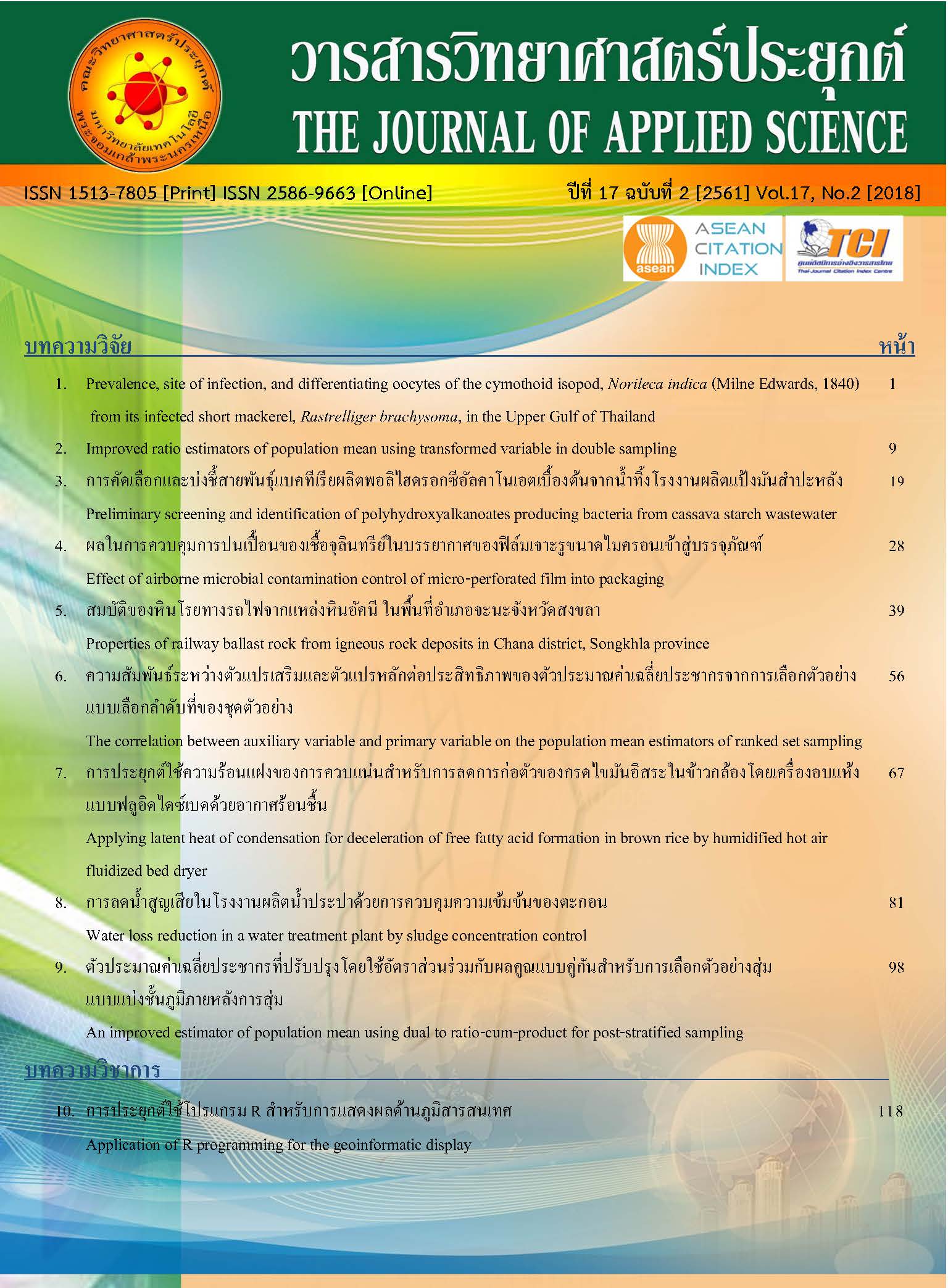Prevalence, site of infection, and differentiating oocytes of the cymothoid isopod, Norileca indica (Milne Edwards, 1840) from its infected short mackerel, Rastrelliger brachysoma, in the Upper Gulf of Thailand
Keywords:
microanatomy, cymothoid crustacean, short mackerel, parasitic isopodAbstract
Norileca indica, a cymothoid isopod crustacean, is an obligate parasite infecting marine fishes in tropical areas. This study attempted to investigate the prevalence, site of infection and distinct stages of oogenesis of this parasitic isopod obtained from short mackerel (Rastrelliger bachysoma). All N. indica samples were collected and processed through histological techniques. N. indica showed higher prevalence during the dry season than the rainy season and its parasitic infections were more prevalent in the female R. brachysoma (60% prevalence) compared to males. Two distinct sites of N. indica attachment on the host (infection sites) including gill and integument were clearly observed. Interestingly, this isopod preferred to attach more on the integument surface than gill, especially in the female R. brachysoma (55% prevalence). Using histological observation, N. indica exhibited asynchronous development of oocyte in the ovary. The oocytes were enclosed by a thin layer of connective and muscular tissues. Three stages of oogenesis can be identified in the ovary: oogonium, primary oocyte, and secondary oocyte. Oogonium located inside the cyst near the germinal epithelium. A large nucleus of oogonium was surrounded by a weak basophilic cytoplasm. Unlike oogonium, multiple nuclei (2 - 3 nuclei) surrounded by basophilic cytoplasm was a key characteristic of the primary oocyte. The secondary oocyte contained spherical yolk granules with multiple layers of follicular cells, which might function to support yolk uptake into the ooplasm. In addition, early embryonic development of N. indica was also observed in this study. Taken together, this finding highlights parasitic prevalence and infection sites of N. indica in short mackerel, as well as a better resolution of its oogenesis, early development and reproductive cycle.


